Richard E. Phillips Lecture Series
The Richard E. Phillips Distinguished Lecture Series was established in 1997 with generous endowment from the family of our late distinguished colleague Richard E. Phillips. The purpose of the Phillips Lectures is to advertise the utility and power of mathematics within the university, and to stimulate the interest of graduate students, postdocs and faculty. Interaction with graduate students and postdoctoral fellows is an integral part of the visit. Each series consists of three lectures delivered over a period of 4-5 days. The first lecture is targeted to a broad audience with diverse mathematical background and displays the utility of the subfield of mathematics. The second lecture is at the level of a mathematical colloquium, while the third is more focused and highlights technical aspects of the domain.
Upcoming Lecture
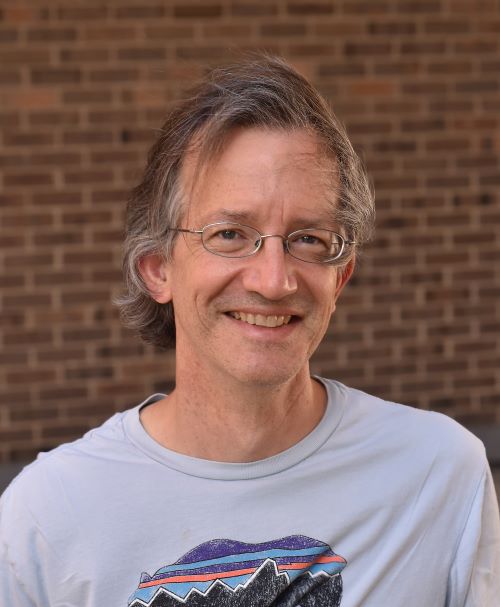
Professor Chris Skinner
Series Abstract: Special values of L-functions have long been of interest to those interested in number theory. Euler's famous solution of the Basel problem: $1/1 + 1/4 + 1/9 + 1/16 + 1/25 + ... = \pi^2/6$ gives the value at $s=2$ of Riemann's zeta function, for example. Understanding and proving such formulas has been a major theme in algebraic number theory. These lectures will discuss many such formulas, explain some of their significance in number theory and related fields, and describe some emerging ideas for proving many more.
Past Lectures
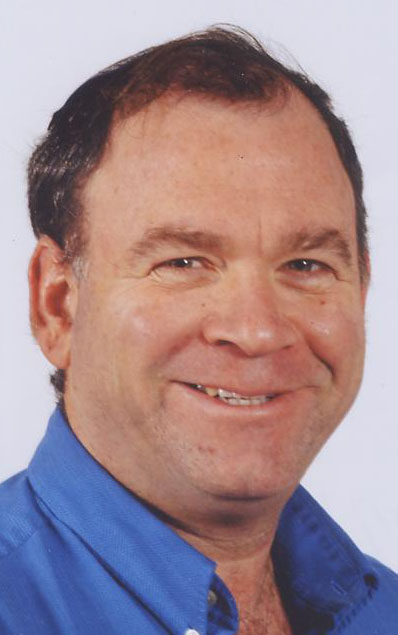 Lecture 1: Real applications of non-real numbers: Ramanujan graphs
Lecture 1: Real applications of non-real numbers: Ramanujan graphs
Monday, March 12: Kellogg Center Auditorium 5:30 - 6:30 PM
The real numbers form a completion of the field of rational numbers. We will describe the fields of p-adic numbers which are different completions of the rationals. Once they are defined, one can study analysis and geometry over them. While being very abstract, the main motivation for studying them came from number theory. Developments in the last 2-3 decades shows various applications to the real world: communication networks, etc. This is done via expander graphs and Ramanujna grpahs which are "Riemann surfaces over these p-adic fields". All notions will be explained.
Lecture 2: High dimensional expanders: From Ramanujan graphs to Ramanujan complexes
Tuesday, March 13: 115 International Center 4:00 – 5:00 PM
Expander graphs in general, and Ramanujan graphs, in particular, have played a major role in combinatorics and computer science in the last 4 decades and more recently also in pure math. Approximately 10 years ago, a theory of Ramanujan complexes was developed by Li, Lubotzky-Samuels-Vishne and others. In recent years a high dimensional theory of expanders is emerging. The notions of geometric and topological expanders were defined by Gromov in 2010 who proved that the complete d-dimensional simplicial complexes are such. He raised the basic question of existence of such bounded degree complexes of dimension d>1. Ramanujan complexes were shown to be geometric expanders by Fox-Gromov-Lafforgue-Naor-Pach in 2013, but it was left open if they are also topological expanders. By developing new isoperimetric methods for "locally minimal small" F_2- co-chains, it was shown recently by Kaufman- Kazdhan- Lubotzky for small dimensions and Evra-Kaufman for all dimensions that the d-skeletons of (d+1)-dimensional Ramanujan complexes provide bounded degree topological expanders. This answers Gromov's original problem, but still leaves open whether the Ramanujan complexes themselves are topological expanders. We will describe these developments and the general area of high dimensional expanders and some of its open problems.
Lecture 3: Groups' approximation, stability and high dimensional expanders
Wednesday, March 14: C304 Wells Hall 10:00 – 11:00 AM
Several well-known open questions (such as: are all groups sofic or hyperlinear?)
have a common form: can all groups be approximated by asymptotic homomorphisms into
the symmetric groups Sym(n) (in the sofic case) or the unitary groups U(n) (in the
hyperlinear case)?
In the case of U(n), the question can be asked with respect to different metrics and
norms. We answer, for the first time, one of these versions, showing that there exist
fintely presented groups which are not approximated by U(n) with respect to the Frobenius
(=L_2)norm.
The strategy is via the notion of "stability": some higher dimensional cohomology
vanishing phenomena is proven to imply stability and using higher dimensional expanders,
it is shown that some non-residually finite groups (central extensions of some lattices
in p-adic Lie groups) are Frobenious stable and hence cannot be Frobenius approximated.
All notions will be explained. Joint work with M. De Chiffre, L. Glebsky and A. Thom.

Lecture 1: An introduction to Heegaard Floer homology
Monday 3/20/17: Kellogg Center Auditorium 5:30-6:30 pm, reception following in Red Cedar AB.
"Knot theory" is the study of closed, embedded curves in three-dimensional space. Classically, knots can be studied via various computable polynomial invariants, such as the Alexander polynomial. In this first talk, I will recall the basics of knot theory and the Alexander polynomial, and then move on to a more modern knot invariant, "knot Floer homology", a knot invariant with more algebraic structure associated to a knot. I will describe applications of knot Floer homology to traditional questions in knot theory, and sketch its definition. This knot invariant was originally defined in 2003 in joint work with Zoltan Szabo, and independently by Jake Rasmussen. A combinatorial formulation was given in joint work with Ciprian Manolescu and Sucharit Sarkar in 2006.
Lecture 2: Bordered techniques in Heegaard Floer homology.
Tuesday 3/21/17: 115 International Center 5:20 – 6:20
Heegaard Floer homology is a closed three-manifold invariant, defined in joint work with Zoltan Szabo, using methods from symplectic geometry (specifically, the theory of pseudo-holomorphic disks). The inspiration for this invariant comes from gauge theory. In joint work with Robert Lipshitz and Dylan Thurston from 2008, the theory was extended to an invariant for three-manifolds with boundary, "bordered Floer homology". I will describe Heegaard Floer homology, motivate its construction, list some of its key properties and applications, and then sketch the algebraic input for the bordered version.
Lecture 3: Bordered knot invariants
Wednesday 3/22/17: C304 Wells Hall 4:00 – 5:00pm
I will describe a bordered construction of knot Floer homology, defined as a computable, combinatorial knot invariant. Generators correspond to Kauffman states, and the differentials have an algebraic interpretation in terms of a certain derived tensor product. I will also explain how methods from bordered Floer homology prove that this invariant indeed computes the holomorphically defined knot Floer homology. This is joint work with Zoltan Szabo.
Bio:
Peter Ozsvath received his PhD at Princeton University in 1994 under the supervision of John Morgan. He has held professorship positions at Columbia University, University of California at Berkeley, Massachusetts Institute of Technology, and is currently a professor of mathematics at Princeton University. He is a major figure in the modern development of topology. Together with Zoltan Szabo, Peter created Heegaard Floer homology, an extremely influential invariant of a 3-manifold equipped with a spin^c structure. He was an invited speaker at the International Congress of Mathematics, and a recipient of numerous awards, including an Alfred P. Sloan Fellowship, a Guggenheim Fellowship, and the American Mathematical Society’s extremely prestigious triennial Oswald Veblen Prize in Geometry.
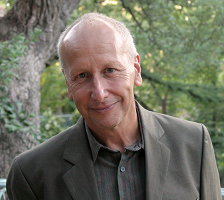
"The geometric structure of mathematical models involving minimal surfaces and phase transition problems"
In the first lecture I will discuss some of the main ideas in the theory of regularity for minimal surfaces and for free boundary problems and how they influence each other.
In the next two lectures I will dwell in more detail on the main ideas of the mathematical theory and several problems where phase transitions and minimal surfaces interact, mainly when the phase transition energy involves bulk energy in each phase and transition energy along the interphase.
Wednesday, October 19th, 2016 - 5:30 PM - 6:30 PM - Kellogg Center Auditorium
Thursday, October 20th, 2016 - 4:00 PM - 5:00 PM - 115 International Center
Friday, October 21st, 2016 - 4:00 PM - 5:00 PM - C304 Wells Hall

The following is the schedule of his lectures with abstracts:
-
"Undecidability in number theory" - Monday, March 21, 6:30-7:30PM
Abstract: Hilbert's Tenth Problem asked for an algorithm that, given a multivariable polynomial equation with integer coefficients, would decide whether there exists a solution in integers. Around 1970, Matiyasevich, building on earlier work of Davis, Putnam, and Robinson, showed that no such algorithm exists. But the answer to the analogous question with integers replaced by rational numbers is still unknown, and there is not even agreement among experts as to what the answer should be.
-
"Undecidability in group theory, topology, and analysis" - Tuesday, March 22,, 4:10PM-5:00PM
Abstract: The most basic questions about finitely presented groups turn out to be undecidable: one cannot decide whether an element is the identity, or even whether the group itself is trivial. These negative results were used to prove undecidability of statements about manifolds and knots, but some questions in intermediate dimensions remain open. The status of some basic problems of analysis, concerning inequalities and integration in elementary terms, will be discussed too.
-
"Undecidability everywhere else" -Thursday, March 24, 4:10PM-5:00PM
Abstract: This will be a sampling of problems, decidable or not, in other areas of mathematics, including combinatorics, linear algebra, algebraic geometry, commutative algebra, and game theory. For example, one open question concerns chess on an infinite chessboard.
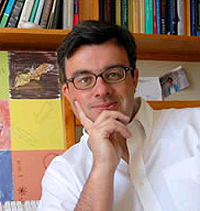
Emmanuel Candès is the Barnum-Simons Chair in Mathematics and Statistics, a professor of electrical engineering (by courtesy) and a member of the Institute of Computational and Mathematical Engineering at Stanford University.
His research interests are in computational harmonic analysis, statistics, information theory, signal processing and mathematical optimization with applications to the imaging sciences, scientific computing and inverse problems.
Candès has received the Alan T. Waterman Award from NSF, the highest honor bestowed by the NSF, which recognizes the achievements of early-career scientists. In 2010 Candès and Terence Tao were awarded the George Pólya Prize.In 2011, Candès was awarded the ICIAM Collatz Prize. He was presented with the Dannie Heineman Prize by the Academy of Sciences at Göttingen in 2013. In 2014 he was elected to the National Academy of Sciences, and in 2015 he received the George David Birkhoff Prize of from AMS / SIAM.
The following is the schedule of his lectures with abstracts:
-
"The Art and Science of Systems with too many Unknowns" - Monday, Oct. 26 at 6:00 PM in B119 Wells Hall
Abstract: In middle or high school, we all learned that we could not guess the values of 1,000 unknown variables from just 500 linear equations; we would need at least as many equations as variables. The trouble is that in many areas of science and engineering, it is now common to have fewer observations than variables. In biomedical imaging applications, for example, we have a small number of measurements and yet wish to reconstruct a high-resolution image. In data analysis, we may be interested in knowing users’ preferences for a collection of items, but only observe their preferences for just a few (as in the Netflix prize). In genetics, we wish to assay tens of thousands of genes at the same time from perhaps a few hundred observations/patients. The surprise is that in many cases of scientific interest it is possible to solve systems of equations with too many unknowns by solving some simple convex programs. This discovery is turning a few fields a bit upside down because it is effectively says that to make a highresolution image, say, we need to collect far fewer data points than were thought necessary. This phenomenon has already had tremendous implications, especially in the area of magnetic resonance imaging, where scan time can be dramatically reduced, thereby allowing children to have their heart stopped for a few seconds rather than a couple minutes.
-
"Around the Reproducibility of Scientific Research in the Big Data Era: A Knockoff Filter for Controlling the False Discovery Rate" - Tuesday, Oct. 27 at 4:10 PM in 115 International Center
Abstract: The big data era has created a new scientific paradigm: collect data first, ask questions later. Imagine that we observe a response variable together with a large number of potential explanatory variables, and would like to be able to discover which variables are truly associated with the response. At the same time, we need to know that the false discovery rate (FDR)— the expected fraction of false discoveries among all discoveries—is not too high, in order to assure the scientist that most of the discoveries are indeed true and replicable. We introduce the knockoff filter, a new variable selection procedure controlling the FDR in the statistical linear model whenever there are at least as many observations as variables. This method works by constructing fake variables, knockoffs, which can then be used as controls for the true variables; the method achieves exact FDR control in finite sample settings no matter the design or covariates, the number of variables in the model, and the amplitudes of the unknown regression coefficients, and does not require any knowledge of the noise level. This is joint work with Rina Foygel Barber.
-
"Modern Optimization Meets Physics: Recent Progress on the Phase Retrieval Problem" - Wednesday, Oct. 28 at 2:30 PM in C304 Wells Hall
Abstract: In many imaging problems such as X-ray crystallography, detectors can only record the intensity or magnitude of a diffracted wave as opposed to measuring its phase. This means that we need to solve quadratic equations – this is notoriously NP hard – as opposed to linear ones. While we present recently introduced effective convex relaxations to the phase retrieval problem with rather spectacular theoretical guarantees, the focus is on class of novel non-convex algorithms, which can be provably exact. This class of algorithms, dubbed Wirtinger flows, finds the solution to randomized quadratic systems from a number of equations (samples) and flops that are both optimal. A a high level, the algorithm can be interpreted as a sort of stochastic gradient scheme, starting from a guess obtained by means of a spectral method. We demonstrate that the Wirtinger flow reconstruction degrades gracefully as the signal-to-noise ratio decreases. The empirical performance shall be demonstrated on phase retrieval problems currently at the center of significant research efforts collectively known under the name of coherent diffraction imaging; among other things, these efforts are aimed at determining the 3D structure of large protein complexes.
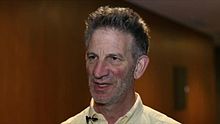
This spring's Phillips Lecture Series will be given by Professor Peter Sarnak during the second week of January, 2012 Please note times and locations below.
Peter Sarnak has made major contributions to number theory and to questions in analysis motivated by number theory. His interest in mathematics is wide-ranging, and his research focuses on the theory of zeta functions and automorphic forms with applications to number theory, combinatorics, and mathematical physics.
The following is the schedule of his lectures with abstracts:
-
"Mobius Randomness and Dynamics" - Monday, January 9th, 4:10 - 5:00 p.m. Room: 115 International Center
Abstract: The Mobius Function mu(n) is minus one to the number of prime factors of n, if n has no square factors and zero otherwise. Understanding the randomness (often referred as the Mobius randomness principle) in this function is a fundamental and very difficult problem.We will explain a precise dynamical formulation of this randomness principle and report on recent advances in establishing it and its applications.
***There will be a Reception in the Mathematics Library (D101 Wells) immediately following this first talk. Everyone who attends the talk is invited.***
-
"Thin Groups and the Affine Sieve" - Tuesday, January 10th, 4:10 - 5:00 p.m. Room: A304 Wells Hall
Abstract: Infinite index subgroups of integer matrix groups like SL(n,Z) which are Zariski dense in SL(n), arise in geometric diophantine problems (eg Integral Apollonian packings) as well as monodromy groups associated with families of algebraic varieties. One of the key features needed when applying such groups in number theoretic problems is that the congruence graphs associated with these groups are "expanders". We will introduce and explain these ideas and review some recent developments connected with the affine sieve.
-
"Nodal Lives of Maass Forms and Critical Percolation" - Wednesday, January 11th, 9:10 - 10:00 a.m. Room: A304 Wells Hall
Abstract: We describe some results concerning the number of connected components of nodal lines of high frequency Maass forms on the modular surface. Based on heuristics connecting these to a critical percolation model, Bogomolny and Schmit have conjectured, and numerics confirm, that this number follows an asymptotic law. While proving appears to be very difficult, some approximations to it can be proved by developing various number theoretic and analytic methods. The work we report on is joint with A.Ghosh and A.Reznikov.
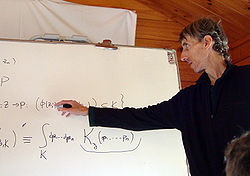
This fall's Phillips Lecture Series will be given by Professor Clifford H. Taubes during the first week of November. The first talk is for a general audience, and the later talks are at graduate-student level. NOTE THE UNUSUAL TIME AND LOCATION.
Clifford Taubes received a Ph.D. in Physics from Harvard University in 1980 and, except for two years at Berkeley, has been at Harvard ever since. He is renown for his work on the various non-linear partial differential equations that have entered geometry from physics, including the monopole, Yang-Mills and Seiberg-Witten equations. Taubes has repeatedly used these equations to make startling connections and prove deep results about geometry, topology and dynamics. His most recent breakthrough was his 2007 proof of the 30-year-old Weinstein Conjecture in dynamical systems.
Abstract: Certain very special loops and surfaces are playing a central role in our attempts to understand the mysteries of 3- and 4-dimensional spaces. Analogous loops and surfaces appear in high energy and condensed matter physics, and the math and physics versions are related on many levels. I will describe how these loops and surfaces arise, what they tell us about 3- and 4-dimensional spaces, and what we wish they would say.
The following is the schedule of his lectures with abstracts.
- Loops, surfaces and the structure of 3 and 4 dimensional spaces" - Monday, November 2, 4:30 - 5:30 p.m. Room: 115 International Center *There will be a Reception in the Mathematics Library (D101 Wells) immediately following this first talk. Everyone who attends the talk is invited.
- "The Seiberg-Witten equations and dynamics I" - Tuesday, November 3, 4:10 - 5:00 p.m., A-304 Wells Hall
- "The Seiberg-Witten equations and dynamics II" - Wednesday, November 4, 4:10 - 5:00 p.m., A-304 Wells Hall
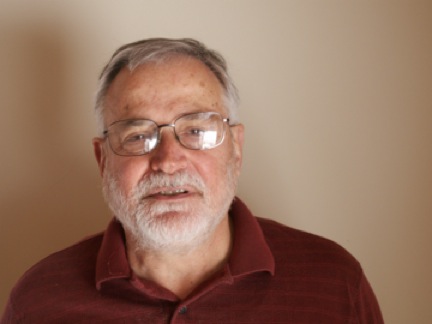
The Phillips Lecture Series will be held April 20-24, 2009, with George Papanicolaou, distinguished professor from Stanford University, giving the lectures listed below. There will be a welcoming reception for Prof. Papanicolaou on Monday, April 20th from 5 to 7 p.m. in the Mathematics Library, D101 Wells. Finger food, beer and wine will be served. Please plan on attending the reception after the first lecture.
Professor Papanicolaou is a world leader in waves and diffusion in inhomogeneous or random media and in the mathematical analysis of multi-scale phenomena that arise in their study. Applications come from electromagnetic wave propagation in the atmosphere, underwater sound, waves in the lithosphere, diffusion in porous media, etc. He has made important contributions in both linear and nonlinear waves and diffusion, in both direct and inverse problems. He is now working on assessing multi-pathing effects in communication systems, especially when time reversal arrays are used.
The following is the schedule of his lectures with abstracts.
-
Imaging with noise I - Monday, April 20, 2009, 4:10 -5 p.m. B104 WH (Lecture Slides)
Abstract: It is somewhat surprising at first that it is possible to locate a network of sensors from cross correlations of noise signals that they record. This is assuming that the speed of propagation in the ambient environment is known and that the noise sources are sufficiently diverse. If the sensor locations are known and the propagation speed is not known then it can be estimated from cross correlation information. Although a basic understanding of these possibilities had been available for some time, it is the success of recent applications in seismology that have revealed the great potential of correlation methods, passive sensors and the constructive use of ambient noise in imaging. I will introduce these ideas in an interdisciplinary, mathematically simplified way and show that a great deal can be done with them.
-
Imaging with noise II – Tuesday, April 21, 4:10-5 p.m., A304 Wells Hall (Lecture Slides)
Abstract: Things become more complicated, and a mathematically more interesting, when the ambient medium is also strongly scattering. I will review what is known so far in this case, and discuss what might be expected. I will also discuss in more detail passive sensor imaging and its resolution theory.
-
Imaging with noise III – Thursday, April 23, 4:10-5 p.m., A304 Wells Hall (Lecture Slides)
Abstract: I will extend the discussion of sensor location issues when there is strong scattering, especially issues that arise in the microwave regime in which we have real data available. I will conclude with the formulation of several open problems in passive sensor location and imaging.
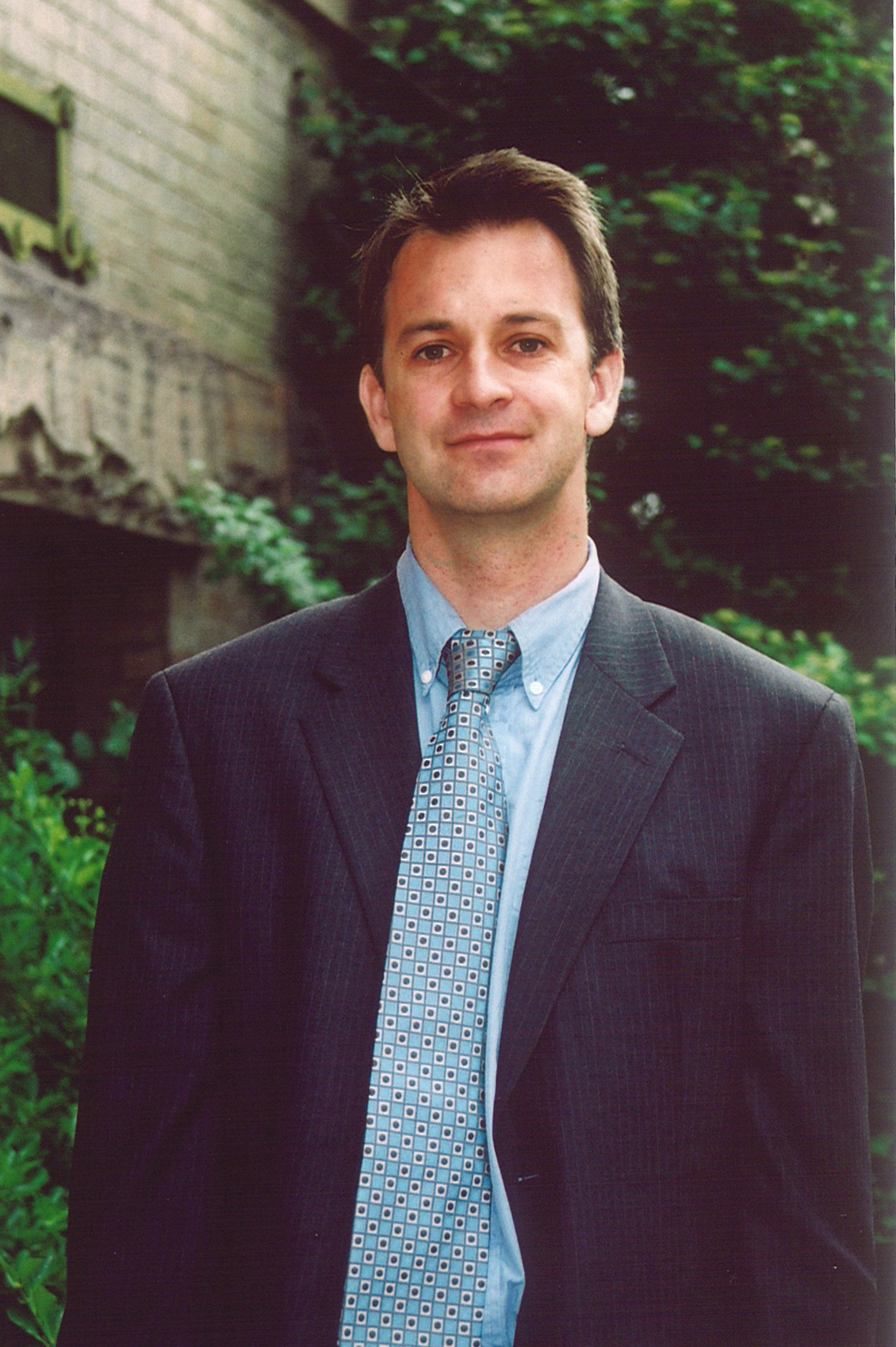
Abstract: The zeroes of a polynomial, and the locus of simultaneous zeros of several polynomials, has been studied for over 500 years. These loci are simplest when one uses complex numbers, compactifies, and perturbs the equations to remove singularieies. The loci are then smooth projective varieties. These are the central objects in algebraic geometry. They are studied by a combination of algebraic and geometric methods, and a central problem is their classification.
These talks will describe the progress toward classification.The first lecture will focus on the classical case of complex curves (Riemann surfaces) and some general features of the problem.The second lecture will describe the classification of two-dimensional varieties (complex surfaces) done at the beginning of the 20-th century and introduce some of the ideas of S. Mori's program for extending the classification to higher dimensions.The last talk will discuss the Mori program in more detail, ending with a recent theorem provided by C. Birkar, P. Cascini, J. McKernan and myself, that (in most cases) completes this program in all dimensions.
The dates of the lectures are:
- Lecture 1: Monday, March 17 4:10-5 p.m B 104 WH
- Lecture 2: Tuesday, March 18 4:10-5 pm A 304 WH
- Lecture 3: Thursday, March 20 4:10-5 pm A 304 WH
Christopher Hacon recieved his PhD from U.C.L.A. in 1998. His outstanding work in algebraic geometry has been recognized by a Sloan Fellowship (2003) and AMS Centennial Fellowship (2006). Hacon and his collaboarator Mc Kernan were recently awarded the very prestigious 2007 Clay Research Award for their work on "advancing our understanding of the birational geometry of algebraic varieties". Their theorem stating that the canonical ring of any smooth algebraic variety is finitely-generated is a major advance in mathematics.

This year's Phillips Lecturer is Fanghua Lin of the Courant Institute of Mathematical Sciences at New York University. He will be in residence in the department April 16-20. The following is the schedule of his lectures with abstracts.
Lecture 1: Tuesday April 17 4:10 pm B 102 WH Complexity and quantative Analyticity of Solutions
Classical real algebriac geometry studies the zero sets of polynomial functions.The complexity of such zero sets(topologically, geometrically or analytically) can be controlled by the degrees of the polynomials.One of the natural questions is to what extent such results would be also true for solutions of partial differential equations.One immediate issue comes up is the "analyticity" which, for solutions of PDEs often require equations to be of elliptic and parabolic types ,and may be with analytic coffecients etc.The purpose of this lecture is to present various progress towarding such a general goal. We shall describe a global analytical quantity called frequency,which plays the similar rule as the degree for the polynomials. We shall illustrate how the frequency measures the quantative analyticity and controls the complexity of solutions in various senses.
Lecture 2: Wednesday April 18 4:10 pm A 304 WH Optimal Partitions of Eigenvalues.
Here we shall discuss the following optimization problem for eigenvalues.Consider a bounded domain in the Euclidian Space, and let m be a positive integer.One wants to divide the domain into m subdomains in such a way that the sum of the first eigenvalues of the Laplacian on each subdomains with the Dirichelet boundary conditions to be minimun with respect to all reasonable partitions of the domain. It appears that this lecture would have nothing to do with the previous one. However, we shall see that the notion of frequency introduced in the first lecture would play again an important rule in the understanding of this optimal partition problem. We shall describe classical solutions of the problem.
Lecture 3: Thursday April 19 4:10 pm A 304 WH Singular perturbations and complexity of moduli spaces of solutions.
The existence of solutions and their behavior of the singularly perturbed semilinear elliptic problems have been studied by many authors. There are ,however,some general and seemingly important issues that have not been examined carefully.In this lecture, I shall discuss a few of such issues, in particular, the energy spectrums and a nonlinear quantum ergodicity and, to present some preliminary results. These studies can be viewed as extension of whose discussed in the first lecture, which aimed preliminary at solutions of linear equations.
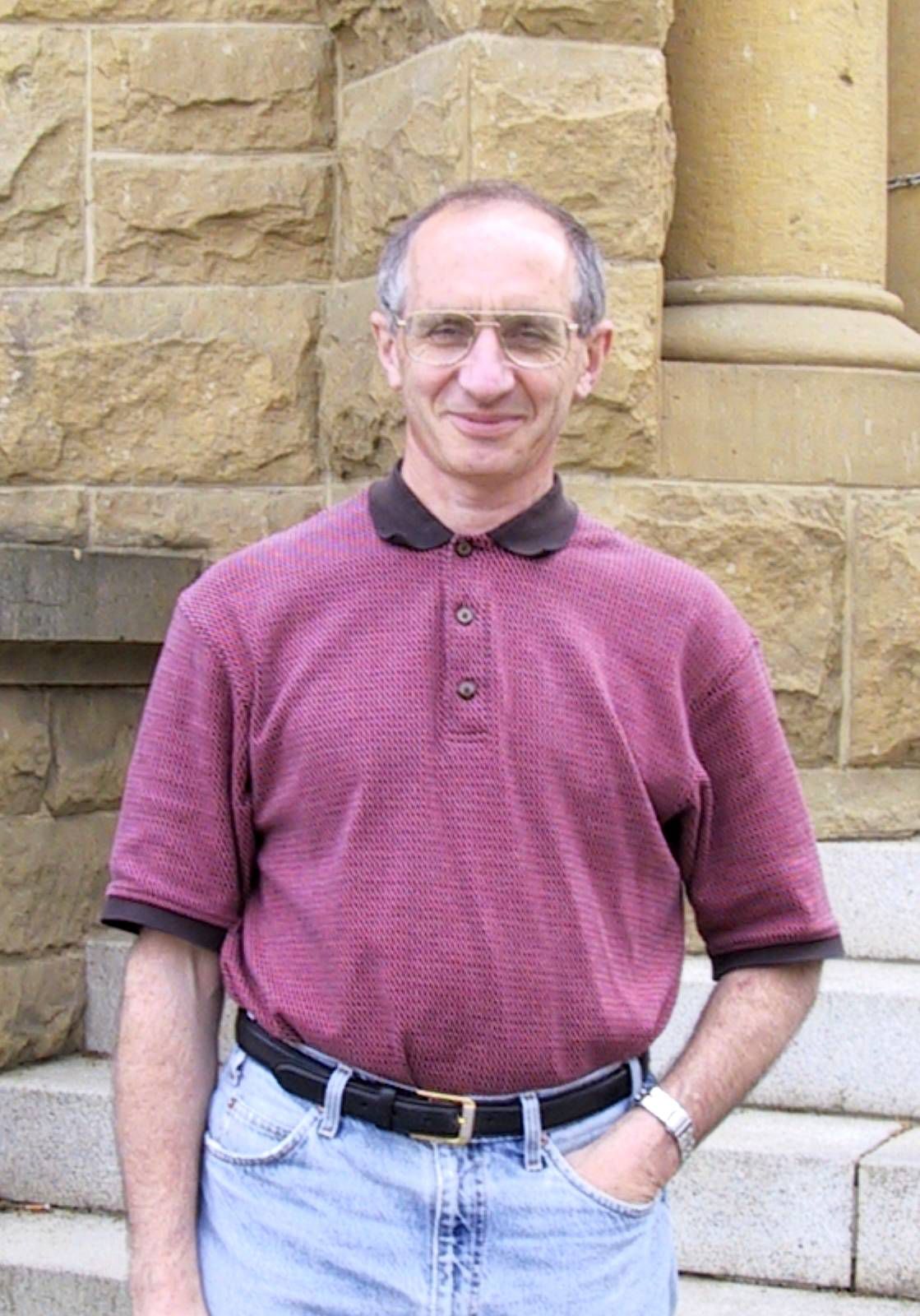
This year's Phillips Lecturer is Professor Yasha Eliashberg of Stanford University. He will be in residence in the department April 17-21. The following is the schedule of his lectures with abstracts. The first lecture will be aimed at a general mathematical audience.
Lecture 1: Tuesday April 18 4:10-5:00 pm B 102 WH Geometry of contact transformations: orderability vs. squeezing
Gromov's famous non-squeezing theorem states that the standard symplectic ball cannot be symplectically squeezed into any cylinder of smaller radius. An attempt to find an analog of this result in contact geometry brings a surprising answer: while contact non-squeezing phenomenon exists on large scales, it disappears on small scales. It turns out that the contact (non-)squeezing problem is tightly related to the problem of existence of a natural partial order on the universal cover of the contactomorphisms group of a contact manifold. In its turn, the answer to this question surprisingly sensitive to the topology of the contact manifold. For instance, the answer is positive for the standard contact structure on real projective spaces but negative for spheres. This is a joint work with S.S Kim and L.Polterovich.
Lecture 2: Wednesday April 19 4:10-5:10 pm A 304 WH Symplectic geometry of affine complex manifolds.
Affine, also called Stein complex manifold are basic objects studied in Complex Analysis. On the other hand, Stein manifolds have a canonical built-in symplectic geometry, which is essential for understanding their complex geometry. The problems of existence and of deformation equivalence of Stein manifolds, as well as Morse theoretic problems about plurisubharmonic functions turn out to be purely symplectic geometric questions. Symplectic topology of a Stein manifold, while highly non-trivial, is very unstable, and can be completely understood after multiplication of the manifold by $\mathbb{C}$.
Lecture 3: Thursday April 20 4:10-5:10 pm A 304 WH Differential equations arising in Symplectic Field Theory.
Algebraic structures of Symplectic Field Theory(SFT), a project initiated a few years ago by A. Givental, H. Hofer and the speaker, naturally lead to interesting differential equations which could be viewed as quantized versions of classical integrable hierarchies. For instance, SFT of the circle $S^1$ provides a quantization of Burgers hierarchy, while SFT for the 3-sphere $S^3$ leads to a quantized Toda hierarchy.
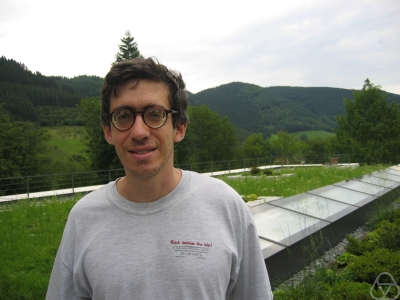
Professor Elkies is a number theorist, a graduate of Harvard and at age twenty-six was the youngest in Harvard history to be granted tenure. He has been recognized by many awards such as a Packard Fellowship, the Prix Peccot of the College de France and the 2004 Conant Prize awarded at the 110th Annual Meeting of the AMS. Elkies' outside interests include classical music (playing the piano and composition) and chess (in which he won the 1999 world championship for solving chess problems).
First Lecture: "Error-correcting codes and algebraic geometry"
Abstract: Fix an integer q>1 and let A be a set of size q. An "code of length N over the alphabet A" is a subset C of AN. Given d<N, one wants C to be as large as possible under the condition that every distinct c,c' in C differ in at least d coordinates. For many q,N,d, the best constructions known use surprisingly sophisticated tools from algebraic geometry and number theory. In particular, this happens when q is large but fixed, d/N is limited to a suitable interval in (0,1), and N tends to infinity. We review some of the applications, both within and outside mathematics, for solutions to the combinatorial problems of constructing good codes and estimating their parameters, and indicate some of the fundamental upper and lower bounds on these parameters. We then outline how algebraic geometry yields very good codes that generalize the following classical construction: A is a finite field k (such as the integers mod q if q is prime), N=q, and C consists of the polynomial functions of degree at most q-d from k to k. Finally, we hint at recent further improvements (to be explored at greater length in the final lecture) that correspond to replacing polynomials by rational functions, or to other variations on the classical construction.
Second Lecture: "Linear codes and algebraic geometry in projective space"
Abstract: When A is a finite field k, the code of polynomial functions of bounded degree from k to k is a special case of a "linear code": a subset of kN that is a vector subspace. Much of the theory of error-correcting codes concerns the important special case of linear codes. There is a particularly close connection between linear codes and algebraic geometry; for instance there is a natural bijection between linear codes with d>2 and subsets of projective space over k. (The polynomial code comes from a ``rational normal curve'' in that projective space.) This connection is profitable for both coding theory and algebraic geometry. We outline some examples in both directions.
Third Lecture: "Linear and nonlinear codes from algebraic curves"
Abstract: In this final and more specialized lecture, we illustrate the application to coding theory of algebraic curves over finite fields, especially modular curves: how the arithmetic of such curves yields excellent error-correcting codes, and how certain families of modular curves have simple formulas that can be used to efficiently construct and potentially use some of those codes.

First Lecture: "The Non-linear Fourier Transform"
Abstract: The non-linear Fourier transform, also known as the scattering transform, transforms potentials on the real line (or the integers) to matrix-valued functions on the real line (or on the circle). It is related to (certain) integrable systems in much the same way the linear Fourier transform is related to constant-coefficient linear PDE, and also shows up in the study of orthogonal polynomials and Jacobi matrices, among other places. Here we view the transform as a non-linear analogue of the ordinary Fourier transform, and discuss the following general question: what results of linear Fourier analysis continue to hold in the non-linear setting? We survey some progress on this question and some outstanding open problems.
Second Lecture: "Pointwise Convergence For The Linera and Non-linear Fourier Transforms"
Abstract: A famous theorem of Carleson asserts that the partial Fourier integrals of a square-integrable function converge for almost every choice of frequency. The no-liner analogue of this would be that the eigenfounctions of a one-dimensional Schrodinger operator with a square integrable function are bounded for almost every choice of energy. This conjecture, which would imply Carleson’s theorem in the linearized limit, remains open, although there has been some recent progress. We describe some recent progress on this problem, including a dyadic “Walsh” model of both the linear and anon-linear problems for which the analogue of Carleson’s theorem has been proven in both settings.
Third Lecture: "Invertibility of the Non-linear Fourier Transform, and A Riemann-Hilbert Problem"
Abstract: The non-linear Fourier transform (on the integers) enjoys several of the properties that the linear Fourier transform does, for instance there is an analogue of Plancherel’s theorem, and of the Paley-Wiener theorems. However, there is an interesting failure of invertibility (first observed by Volberg and Yuditskii) of the non-linear Fourier transform once one works with functions that are merely sqaure0integrable, which is associated with the non-uniqueness of a certain Riemann-Hilbert problem. In the special case when the non-linear Fourier transform is a rational function, we can quantify the failure of invertibility precisely in understood, although it is also closely related to the spectral and scattering theory of a certain discrete Dirac operator.
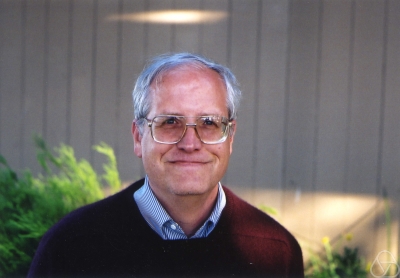
Partial Differential Equations Methods For Dynamics
Abstract: In this sequence of lectures, I will discuss various PDE techniques useful for ``weak KAM theory" in Hamiltonian dynamics. The idea is that an action minimization principle introduced by Mather singles out a sort of integrable structure in the midst of otherwise chaotic motions, on which an appropriate effective Hamiltonian governs the flow. PDE methods provide useful estimates and insights. The three lectures will be expository, introducing the Lagrangian, Hamiltonian and (possible) quantum mechanical aspects of this program.
Lecture 1: Introduction: Linear Programming and Lagrangian Dynamics
Lecture 2: Nonlinear PDE and Hamiltonian Dynamics
Lecture 3: Analogies For Quantum Dynamics
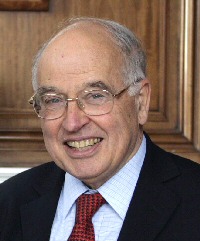
Michael Atiyah received his Ph.D. from Cambridge in 1954, and has held positions at Oxford and Cambridge, prior to moving to Edinburgh. He has contributed to a wide range of mathematics centering on the interaction between geometry and analysis, and was awarded a Fields medal in 1966. Among his many accomplishments are the development of K-theory (with F. Hirzebruch) and the well known Atiyah-Singer Index Theorem.
A Biography of Michael Atiyah can be read at the website: www-groups.dcs.st-andrews.ac.uk/~history/Mathematicians/Atiyah.html
Lecture 1: "Polyhedra in Geometry, Physics and Chemistry"
Abstract: Polyhedra, particularly regular ones such as the tetrahedron or the icosahedron have been studied by Geometers since the time of Plato. They appear in modern science in the shape of crystals and more recently in the Fullerenes of Carbon Chemistry. I will discuss problems in which polyhedra with some form of regularity appear as minimum energy configurations. I will exhibit pictures emerging from computer simulation.
Lecture 2: "A Challenging Problem in elementary Geometry"
Abstract: I will describe a problem in elementary 3-dimennsional geometry whose formulation involves nothing more complicated than complex numbers and determinants. The problem concerns n distinct points in space and while the conjectured result has been verified by computer calculations for n < 20, it has only been proved mathematically for n = 3 and (very recently for n = 4). The conjecture for general n remains as a challenge to the enterprising student or professor!).
Lecture 3: "Projective Planes and Spheres"
Abstract: A famous result in Algebra (and Geometry) asserts that there are only 4 projective planes (satisfying the usual axioms of incidence), namely the real, complex, quaternionic and Cayley planes. For the complex projective plane an old result shows that its quotient by complex conjugation is the 4-dimensional sphere. I will describe a generalization of this result to the quaternionic and Caylely planes. I will also describe a parallel result for the "complexification" of all the projective planes.
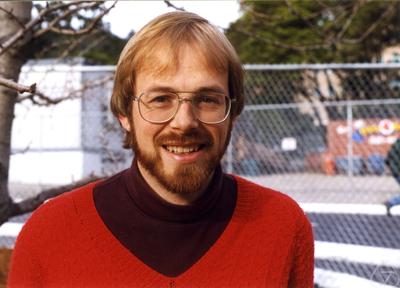
Richard Taylor received his Ph.D. from Princeton University in 1988. After several years at Cambridge University, he moved to his current position as Professor at Harvard. His many important contributions to number theory include the completion of the proof of the Shimura-Taniyama-Weil Conjecture on the modularity of elliptic curves and the proof of the local Langlands Conjecture.
Tuesday, October 10, 2000 B104 Wells Hall:
- 4:00 pm "Elliptic Curves"
- 3:20 pm Coffee, A204 Wells Hall
Wednesday, October 11, 2000 B106 Wells Hall:
- 4:00 pm "Motives, Galois Representations, and Automorphic Forms"
- 7:30 pm Reception. Centennial Room, Kellogg Center
Thursday, October 12, 2000 B108 Wells Hall:
- 4:00 pm "The Local Langlands Conjecture"
- 3:20 pm Coffee, A204 Wells Hall
Robert Calderbank, Director, AT&T Research Laboratory
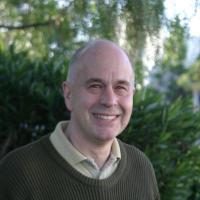
Biography
Robert Calderbank is Director of the Information Sciences Research Laboratory at AT&T Labs in Florham Park, New Jersey. The Laboratory is responsible for fundamental innovation in the way AT&T uses information to operate and compete, one example being the AT&T system for International Toll Fraud Detection. It is widely known for innovation in signal processing that will enable new wireless services and speed Internet access, and for breakthrough science, like quantum computing, that is associated with the magic of discovery.
Dr. Calderbank joined AT&T Bell Laboratories in 1980 where he directed the effort that created the V.34 modem standard, and research on advanced read channel architectures that was fundamental to a highly successful strategic partnership between AT&T Microelectronics and certain disk drive manufacturers. He is one of the inventors of Space-Time codes, a breakthrough wireless technology that uses a small number of antennas to provide data rates and/or reliability far exceeding systems employed today. Dr. Calderbank's work on quantum computing with colleagues at AT&T Labs has attracted considerable coverage in the scientific and popular press.
Ingrid Daubechies, Professor, Princeton University
Biography
Ingrid Daubechies received both her Bachelor's and Ph.D. degrees (in 1975 and 1980) from the Free University in Brussels, Belgium. She held a research position at the Free University until 1987. From 1987 to 1994 she was a member of the technical staff at AT&T Bell Laboratories, during which time she took leaves to spend six months (in 1990) at the University of Michigan, and two years (1991--93) at Rutgers University. She is now at the Mathematics Department and the Program in Applied and Computational Mathematics at Princeton University. Her research interests focus on the mathematical aspects of time-frequency analysis, in particular wavelets, as well as applications.
In 1998 she was elected to be a member of the National Academy of Sciences and a Fellow of the Institute of Electrical and Electronics Engineers. The American Mathematical Society awarded her a Leroy P. Steele prize for exposition in 1994 for her book "Ten Lectures on Wavelets," as well as the 1997 Ruth Lyttle Satter Prize. From 1992 to 1997 she was a fellow of the John D. and Catherine T. MacArthur Foundation. She is a member of the American Academy of Arts and Sciences, the American Mathematical Society, the Mathematical Association of America, the Society for Industrial and Applied Mathematics, and the Institute of Electrical and Electronics Engineers.
Lecture Schedule
Tuesday, April 18, 2000 B102 Wells Hall: (Robert Calderbank)
Abstract: Quantum effects are seldom evident in today's electronic devices since the quantum states of many millions of atoms are averaged together blurring their discreteness. But in quantum computing the foundations of quantum mechanics are finding direct and visible application in information processing. The unreasonable effectiveness of quantum computing is founded on coherent quantum superposition or entanglement which allows a large number of calculations to be performed simultaneously. This coherence is lost as a quantum system interacts with its environment and an important challenge today is to devise means of preserving it.
A quantum error correcting code is a way of encoding quantum states into qubits so that error or decoherence in a small number of individual qubits has little or no effect on the encoded data. This talk will describe a beautiful group theoretic framework that simplifies the presentation of known quantum error correcting codes and greatly facilitates the construction of new examples.
This is joint work with Eric Rains, Peter Shor, and Neil Sloane.
Wednesday, April 19, 2000 B102 Wells Hall: (Robert Calderbank)
Abstract: Matrices of indeterminates with orthogonal columns appear in the mathematics literature as Orthogonal Designs. The existence of orthogonal designs is a subject that occupied Radon and Hurwitz in the 1920s. This talk describes how these designs are used to construct Space-Time Codes that dramatically improve the throughput and reliability of wireless systems employing multiple antennas at the base station and at the mobile. A Space-Time Code derived from a particular 2X2 Orthogonal Design is incorporated in the wideband CDMA standard that will support 3rd generation wireless services in the 2001-2003 timeframe. There may be as many as 1B mobile phones using this arcane mathematical structure.
Thursday, April 20, 2000 B102 Wells Hall: (Ingrid Daubechies)
Abstract: Redundant representations are often superior to bases in order to extract features, and even to denoise signals. For compression purposes, the redundancy seems a handicap, however, mostly because we don't yet know how to "quantize" these expansions effectively. (Note: quantization stands here for something very different from the transition from classical mechanics to quantum mechanics - it is, rather, the transition from coefficients that can take a continuum of values to coefficients that are restricted to a discrete ("quantized") range.)
For bandlimited signals, redundant representations have been used for a while in A/D conversion, via sigma-delta quantizers, which give an approach to quantize efficiently highly redundant samples. The talk will give an overview, from a mathamatical point of view, discuss some recent results, obtained jointly with Ron DeVore, and list open problems (of which there are many).
Friday, April 21, 2000 B102 Wells Hall: (Ingrid Daubechies)
Abstract: Because wavelets are unconditional bases for many function spaces, they give rise to good nonlinear approximation bounds. These have been viewed by mathematicians as the "explanation" of why wavelets work well for compression in a variety of settings. Yet the practice of compression is different from the question of how well we can approximate in a given basis if we are allowed to keep any N terms we choose - in practice, one has to measure the (expected) distortion as a function of the total number of bits used to convey the information. It turns out that in order to exploit the nonlienar approximation results, one has to combine them with "smart" coding strategies (invented already by the engineers!). This is joint work with Albert Cohen, Onur Guleryuz and Michael Orchard.